Culture
The Amazingly Odd Things Americans Do
The U.S. as a nation literally represents a melting pot of cultures, behaviors, norms, beliefs and people. As a result, it is quite possible to travel a couple hundred miles or even just a few city blocks and be surrounded by an entirely different aspect of life, people and practices. However, there are still quirks and behaviorisms that, despite centuries of immigration into the country, make Americans extremely unique compared to the rest of the world. And those are not automatically led by the automatic zeal of democratic freedom and similar grand statements either. In fact, many are very mundane but stand out immediately when seen in other countries as Americans travel. Here are 30 unique habits, behaviors, norms or ideas we take for granted, but raise eyebrows elsewhere:

Using “How Are You?” as a Greeting

When people greet each other around the world the basic communication starts of with some form of a hello. However, Americans have an odd, interesting norm that is learned from a young age that it is entirely okay and allowable as a formal greeting to ask someone how they are without meaning it. We say all the time, “How are You?” as a polite form of hello with no expectation whatsoever to get an answer much less even hear specific information. The greeting began decades ago, and it actually was answered with a “Fine, how are you?” as a response. However, in recent times that has entirely dropped and it’s now just an empty question that puzzles the heck of out everyone not from the U.S.
Avoiding Vacation

Germany and France, for example, practically have a season of mandatory vacation six to eight weeks out of the year. They plan for it, have regular locations far away from home and on the coast or camping, and get detached from the hectic life at least more than a month every year. In the U.S., we are workaholics in comparison. It’s considered even abnormal to take a full two or three weeks of time off and could hamper a career in some corners.
Daring to Smile at a Stranger

We generally think its perfectly normal and friendly to smile at strangers to come across as non-threatening and disarming. This welcomes engagement and at least a nod or smile back. In other countries such a direct connection might actually scare people to turn and walk away, or be seen as suspicious and avoided.
Commercialization of Lawyers

U.S. lawyers market as hard as any business in the American market, which is absolutely a no-no in other countries and cultures. Instead, they build a profession by reference and networking. Here, we have them on commercials as common as car sales.
Super-Sizing Everything

Americans are big on extra helpings, especially with fast food. So extra-size drinks, double size orders and additional add-ons make us feel like we are getting solid value for what we receive. Elsewhere in the world is considered rude and selfish to go back for seconds or expect large sizes and drink refills, even if one paid for the value. Much of this has to do with a different aspect growing up in many cultures that did not have the large grocery stores, fast food venues and massive consumerism so normal in the U.S.
Daring to Drink from Cheap Red Throwaway Cups
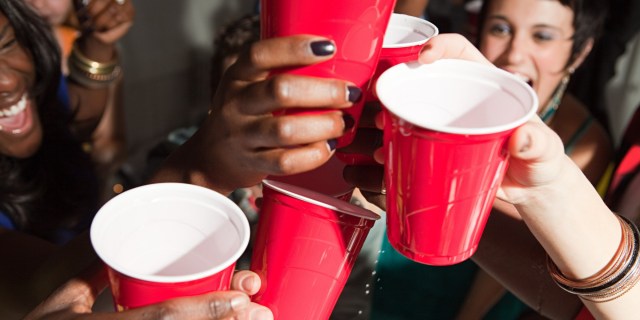
It’s actually a rare thing to drink from a cheap, throwaway plastic cup when people are out on a picnic, hosting friends over in the backyard or meeting up for casual get togethers. However, in the U.S. the red plastic cup is ubiquitous with BBQs, picnics, beaches and more.
Using Bland Currency

Take a close look a currency around the world and one will realize it’s pretty darn colorful. American dollars, on the other hand, are monochromatic, uncreative and downright boring. It doesn’t mean they are worthless. In fact, U.S. dollars are still one of the strongest currencies worldwide. We just can’t come up with a vibrant currency, even with our newest version of dollar bills.
What in the World are Cheerleaders?

We know what cheerleaders are in the U.S., but they really do represent an odd sideline behavior not seen in other countries. Some would never allow it due to cultural or religious restrictions, but others see cheerleading as having nothing to do with a sport and wouldn’t think of trying to either. Americans, however, see cheerleading as normal as apple pie.
Our Coins Don’t Make Sense
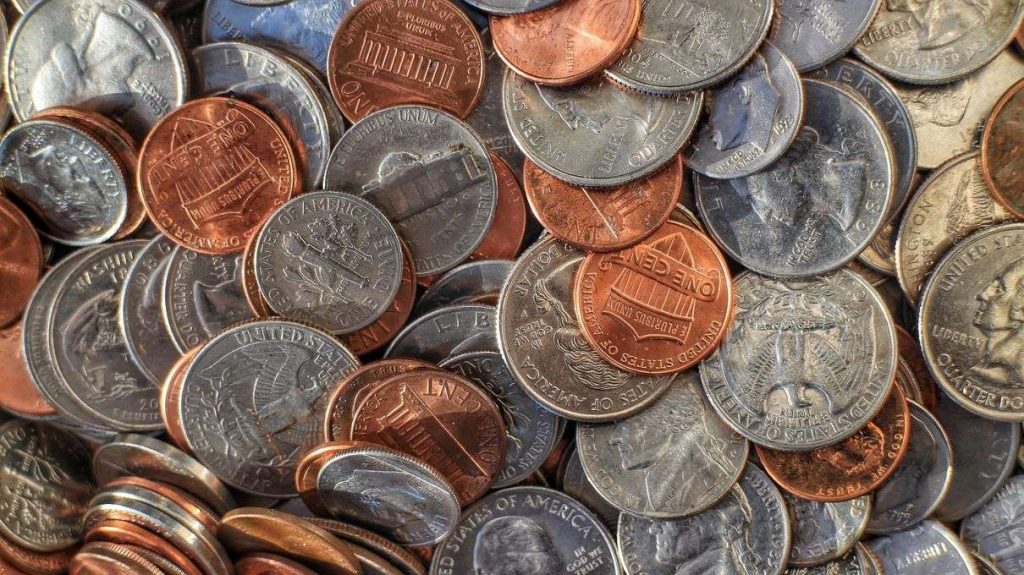
Most coinage around the world focuses on a number value. 10 Euros, 1 Yen, 5 Rubles, etc. Our coins use odd names that, aside from the quarter, don’t really tie to their monetary value. It puzzles the heck out of folks who struggle the first few days trying to remember what each name means. Why is a dime smaller but more than a nickel? Why is a penny brown? Why is a half-dollar almost the size of a regular dollar coin, and why are their two or three different dollar coins? American money is, no surprise very confusing outside of the U.S.
Living with A/C

The world is full of a lot of hot places. Even more challenging, a lot of places are humid and hot. Americans, however, have conquered zones where the summer gets up to 140 degrees with the amazing but mundane creation of the air conditioner. We’re odd birds in this respects. In most place around the world people learn to live with the heat. Americans bring their environment with them instead.
Verifying One’s Drinking Age

We make a big deal in the U.S. about making sure a person is 21 and older before buying alcohol. Elsewhere in the world, folks can start drinking at age 16, and most places don’t bother asking for ID. If a person has enough backbone to come up to the pub or bar and ask for beer or similar with the money, they are served. Part of our age-related focus steps from our Euro-Christian background and fixation on liquor, but part of it is also a compromise between allowing drinking and many elements in the U.S. who would like to go back to Prohibition.
Our Darn Coffee-to-Go Fixation

This probably goes in line with not taking vacation much, but we just can’t sit still and relax much, and that includes how we drink our coffee. Taking coffee on the go is very much a norm in the U.S., but in Europe, for example, one drinks coffee at home, at the office or in a café. Folks definitely don’t walk around with coffee in a paper cup very much.
We Don’t Shut Down at Night

In big cities around the world there are sections and areas that do stay open late into the night, usually for bars and entertainment. However, you can go to just about every town and neighborhood in the U.S. in 2020 and you’re bound to find an all-night fast food joint or gas station open. And we treat Sunday as a regular business day. Other countries actually outlaw being open after hours except around the airports.
Our Restaurant Drive-Throughs

The U.S. is physically a very big country, and from the beginning of the 20th century it became married with the automobile. Entire cities have been planned, built, changed and rebuilt based on vehicle traffic versus any other form of transport. No surprise, we like to eat in our cars too, and that created drive-throughs, a unique American invention. One will be hard-pressed to find a drive-through elsewhere in the world, although some countries with new city expansions are experimenting with the idea.
Really, Really Big Grocery Stores

The U.S. was famous for decades with its grocery stores, symbols of American consumerism. Then we invented big box stores. Now we have big boxes for food, for hardware, for clothing, furniture and even stores for just jackets and coats. The idea is so catching, big box stores have been showing up in Europe as well as China. No surprise, now we have super-store complexes that are even bigger.
Being Overt With Our Flags
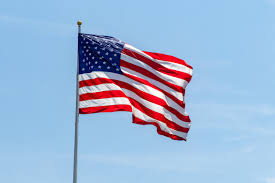
After World War II many countries purposefully avoided strong displays of flags and flag banners on a regular basis. They were seen at parades and on special holidays, but general posting of a country’s flag was seen as a sign of extreme nationalism in many countries and avoided for decades. The U.S., on the other hand, treats it as normal and even very patriotic to fly our flag every day of the week and year, regardless of the reason.
Our Habit of Eating Big

Our eating sizes are no surprise. In addition to expecting large sizes, we eat a lot of food on average too. The amount of food the average American eats is twice the food eaten in most of the world. We also have a heavy diet of processed food and protein. Most other parts of the world focus on grains and vegetables and fruit. No surprise, we produce bigger people on average, but we also have more health problems that are diet-related. Many outside America wonder why we eat the way we do as a result.
We Expect Servers to Hover

Go to a restaurant in other countries and you’re lucky if you see the waiter twice. Our waiters in the U.S., even in basic diners, are checking on patrons and how we’re doing at least five times in a sit-down if not more.
Our Pharmacies are Big Too

Going to get medicine outside of the U.S. often involves finding a universal sign of a pharmacy, usually a pestle and mortar. Once inside, the office is about the size of a small room, maybe even a small closet. So pharmacies in the U.S. are a shock. Either they are mini-malls of their own with just about every general store item in them or they are included in a giant grocery store. Either way, it’s easy for a foreign person to get lost looking for a pharmacy here.
Water is Taken for Granted

We are surprised eating out if we don’t receive our complimentary glass of water both when we sit down as well refills during the meal and at the end, if not a cup of coffee to boot. Water isn’t so plentiful elsewhere, so it surprises visitors why we insist on keeping them hydrated to the point of running to the restroom.
We Love Our Ice

Along with water and our cold drinks, ice is also an expected norm in the U.S. One of the oddest things people experience then traveling to Europe, for example, is asking for a drink and being served a soda with no ice at all. Ice, however, isn’t a universal add-on to a drink, and many restaurants worldwide don’t even have an ice-maker to provide it.
We Value Tipping and Honor It

While hotels around the world expect tipping from customers as a norm, it is not necessarily a standard as much as it is in the U.S. We often hold to a standard of 15 percent for good service and more for large groups. But this is not common internationally. In fact, some places do not allow tipping at all, building it already in the price of service.
We Have Amazing Trust in our Credit Card System

We treat our credit cards like cash, handing it to anyone we need to as payment without a clue what they do with it when we aren’t looking. Foreigners are extremely protective and possessive of their cards in comparison. Where fraud, unfortunately, is common in the U.S., and a replacement card can be had in days, it’s a much harder process in other countries, similar to how cardholders were treated in the 1970s in the U.S.
We Have So Many Darn Choices

Whether it’s clothing, food, TVs, computers, artwork, music, furniture and more, we are buried with choices. Gone are the days of 1950s marketing where you can have any color you want as long as it is white or black. This isn’t the case elsewhere. Many cultures and countries focus on providing on one choice, or a few at most, the better ones with quality versus and array of so-so.
Commercialization of Drugs

Our drugmakers get to have commercials and heavy marketing in the U.S. too. Ulcer medicine is a great example, along with heartburn and anti-depression. In Asia and Europe, however, drugmakers aren’t visual to the public, and prescriptions don’t come with heavy branding.
Our Classy Pajama-Wearing in Public

Yes, that’s a joke. As the U.S., we might be the only culture in the world daring enough or silly enough to wear our pajamas out in public like regular clothes, including fuzzy slippers. While this primarily a teen or college age thing to do, it’s extremely rare worldwide. They look at Americans and shake their heads.
We Have Really Big Roads

Given the size of American cars, it’s not a surprise our roads are big too. Five-lane highways and similar are not uncommon all over the U.S. How we manage to still have traffic-jams is another mystery, but to folks from other countries our roads are huge compared to what they typically drive on.
What’s With Our Bathroom Stalls?

Go to a public restroom in another country that is developed and you will notice that the stalls and stall doors provide a solid privacy. Our bathrooms, regardless of gender have stalls with enough gaps between the walls and doors that one can see inside. Whether its an intentional design to allow spotting problems or plain weirdness, our bathrooms have less privacy by function, period.
Our Wine Bottles Are Weird

We have 3-liter bottles for American wine which is very much an oddity anywhere else. It’s not that our wine is bad. In fact, we have a large number of award-winning wine brands. We just like bigger bottles, which is unheard of elsewhere.
Our Love Affair with Frying

Every county fair that comes up, we have a wonderful trend of frying all sorts of foods. Twinkies, pickles, fruit, and all sorts of meats, we fry it. Some experiments shouldn’t happen, period, but Americans have a wide menu of fried food we love to eat and eat a lot. While frying food is not unique, and can be quite common in some parts of the world like Asia, we have perfected fried food to an art.
As noted at the beginning, even with all our melting pot consolidation, as Americans we have some quirks rarely found anywhere else in the world. And that makes American culture stand out on its own, even when made up of a constant mix of people from everywhere else over generations.
Culture
India Reigns Supreme in Big Cat Conservation: Celebrating Success and Setting New Goals
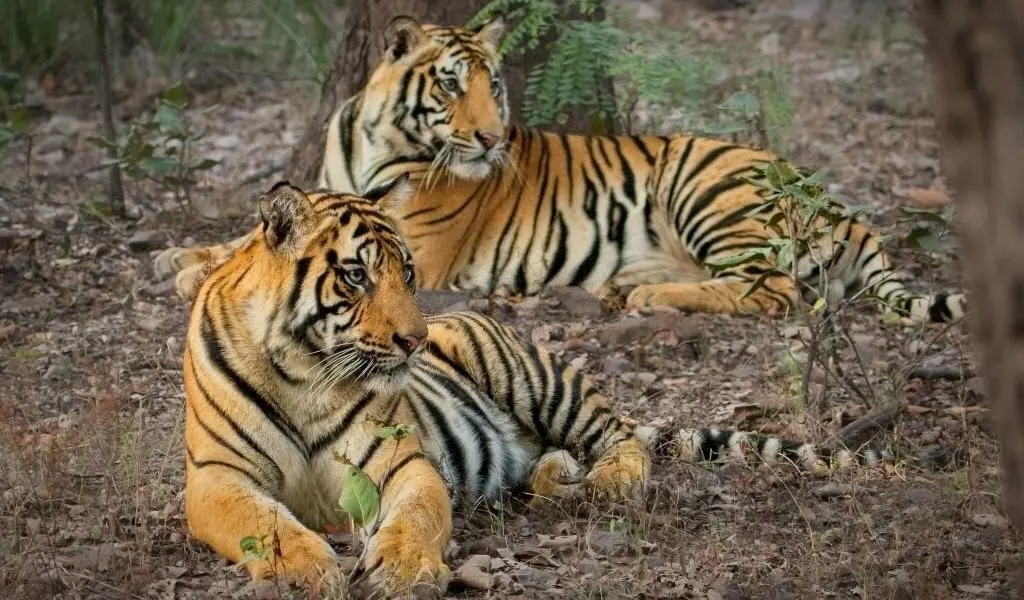
India is now recognized as a global leader in the conservation of big cats, boasting control of 75% of the world’s wild tiger population, serving as the sole sanctuary for Asiatic lions, and celebrating the successful reintroduction of cheetahs. Additionally, populations of leopards and snow leopards in the country are witnessing promising growth. This impressive conservation narrative is getting a further boost with the formation of the International Big Cat Alliance (IBCA), which was officially launched by the Union Cabinet with a funding of Rs 150 crore till 2028. The IBCA secretariat will be headquartered in India, underlining the country’s pivotal role in global big cat conservation efforts.
The Genesis and Goals of the International Big Cat Alliance
Prime Minister Narendra Modi unveiled the IBCA in April 2023 in Mysuru, marking the 50th anniversary of Project Tiger. The alliance aims to foster international collaboration for the preservation of seven key big cat species: lions, tigers, leopards, cheetahs, snow leopards, jaguars, and pumas. India houses five of these species, excluding only the jaguar and puma. This alliance encompasses 96 big cat range countries and various conservation and scientific organizations, demonstrating a robust international effort to protect these vulnerable and endangered species.
Asiatic Lion Conservation: A Beacon of Success
The only wild population of Asiatic lions resides in Gujarat’s Gir National Park and its surroundings, with the population reaching 674 in 2020, up from 523, marking an unprecedented growth rate of 28.87%. This species, once on the brink of extinction with numbers as low as 20, has seen remarkable recovery thanks to dedicated conservation efforts beginning well before India’s independence and formally initiated by the Indian Forest Service in 1965. Plans are now underway to relocate some lions to the Badra Wildlife Sanctuary to manage overpopulation risks in Gir.
Project Tiger: A Legacy of Triumph
India celebrates the resounding success of Project Tiger, initiated in 1973 to reverse the dire decline of tigers from around 40,000 at independence to below 2,000 by 1970 due to rampant hunting and poaching. Today, India hosts 3,682 tigers, a nearly 24% increase from 2018, spread across 53 reserves. This success story is a result of stringent anti-poaching laws, habitat conservation, and local community engagement, positioning India as a leader in tiger tourism and conservation compared to other Asian nations.
The Return of the Cheetah
India has reintroduced cheetahs to its fauna, with initial translocations from Namibia and South Africa to Madhya Pradesh’s Kuno National Park. This reintroduction project has faced challenges, but the recent birth of cubs and a survival rate meeting the project’s early goals highlight its potential success. The program aims to not only revive the cheetah population but also to foster ecological tourism and local economic development.
Leopard and Snow Leopard: Thriving Against Odds
Leopards, despite being the smallest of the large cats in India, are flourishing with a population increase from 12,852 in 2018 to 13,874 in 2022. This growth is credited to comprehensive conservation efforts across various states. Similarly, the elusive snow leopard, primarily found in high-altitude regions of the Himalayas, has been systematically surveyed, revealing a stable population that underscores India’s commitment to preserving its natural heritage.
India’s proactive and successful conservation initiatives for big cats not only enhance biodiversity but also bolster local communities and economies, reinforcing the nation’s commitment to maintaining the delicate balance between human progress and environmental stewardship.
Culture
South Africa Plans to Stop Lion Breeding for Hunts

South Africa announced its plan on Wednesday to gradually stop the breeding of lions for hunting. This decision aims to end the business that has been criticized for a long time. This business involves raising big cats so that rich hunters, who pay a lot of money, can hunt them. These hunters often take parts of the lions, like their heads or skins, as trophies to keep.
The South African government had already shown its desire to stop lion breeding for hunts in 2021. A special group has been working on this matter for two years. Environment Minister Barabara Creecy, during a news conference in Cape Town, said that this group suggested shutting down the industry. This includes stopping the breeding of lions, keeping them captive, or selling anything obtained from captive lions.
Lion breeders have two years to stop their activities voluntarily and find a different business to do before this new rule is enforced. Even though this plan has met with resistance from the industry, which makes a lot of money, the government approved it recently. However, it’s not yet an official law.
This step is taken as more people, especially in Western countries, are against trophy hunting. Efforts to stop trophy imports are gaining support in the United States, Australia, and some European countries. Kamalasen Chetty, who leads the special group, mentioned that the lion breeding industry is big and complicated. It has a long history but doesn’t fit with the latest international trends or changes in local conservation policies.
Animal rights organizations estimate that there are between 8,000 and 12,000 lions on around 350 farms in South Africa. These groups often criticize the way these animals are kept. In contrast, there are only about 3,500 wild lions, as reported by the Endangered Wildlife Trust, an organization based in South Africa.
Culture
Research Finds That Birds Can Be Polite

Did you know that birds can be polite, just like humans? Researchers have found that the Japanese tit, a small bird found in Japan, has a unique way of showing politeness through its wing gestures. This fascinating discovery gives us a glimpse into the complex world of bird communication.
At the University of Tokyo, Professor Toshitaka Suzuki and his team studied these birds and made some amazing discoveries. They noticed that when a pair of Japanese tits arrives at their nest box with food, they don’t rush in. Instead, they wait on nearby perches. What happens next is intriguing: one bird flutters its wings toward the other, as if to say, “After you.” This gesture is like holding the door open for someone, showing respect and care.
The Japanese tit, scientifically known as Parus minor, is not just any bird; it’s known for its intelligence and complex behaviors. Professor Suzuki, who has been studying these birds for over 17 years, found that they use specific calls and even combine these calls into phrases, much like how we form sentences. This shows how advanced their communication skills are.
In their study, published in the journal Current Biology, the researchers observed that these wing-fluttering gestures happened mainly between mates and were a clear sign for one to enter the nest before the other. Interestingly, it was usually the female that made the gesture, inviting the male to go first.
This behavior has led scientists to think about how gestures evolved in the animal kingdom. Just like humans developed gestures by using their hands more when they started walking on two legs, birds might have developed gestures by using their wings while perching.
The research on the Japanese tit is part of a larger effort to understand how animals communicate, not just with sounds but also with physical movements. This could help us learn more about how language and communication developed, even in humans.
So, the next time you see birds, think about the complex and polite ways they might be communicating right in front of your eyes!
Culture
Volunteers and Camels Team Up to Restore Mojave Desert’s Joshua Trees
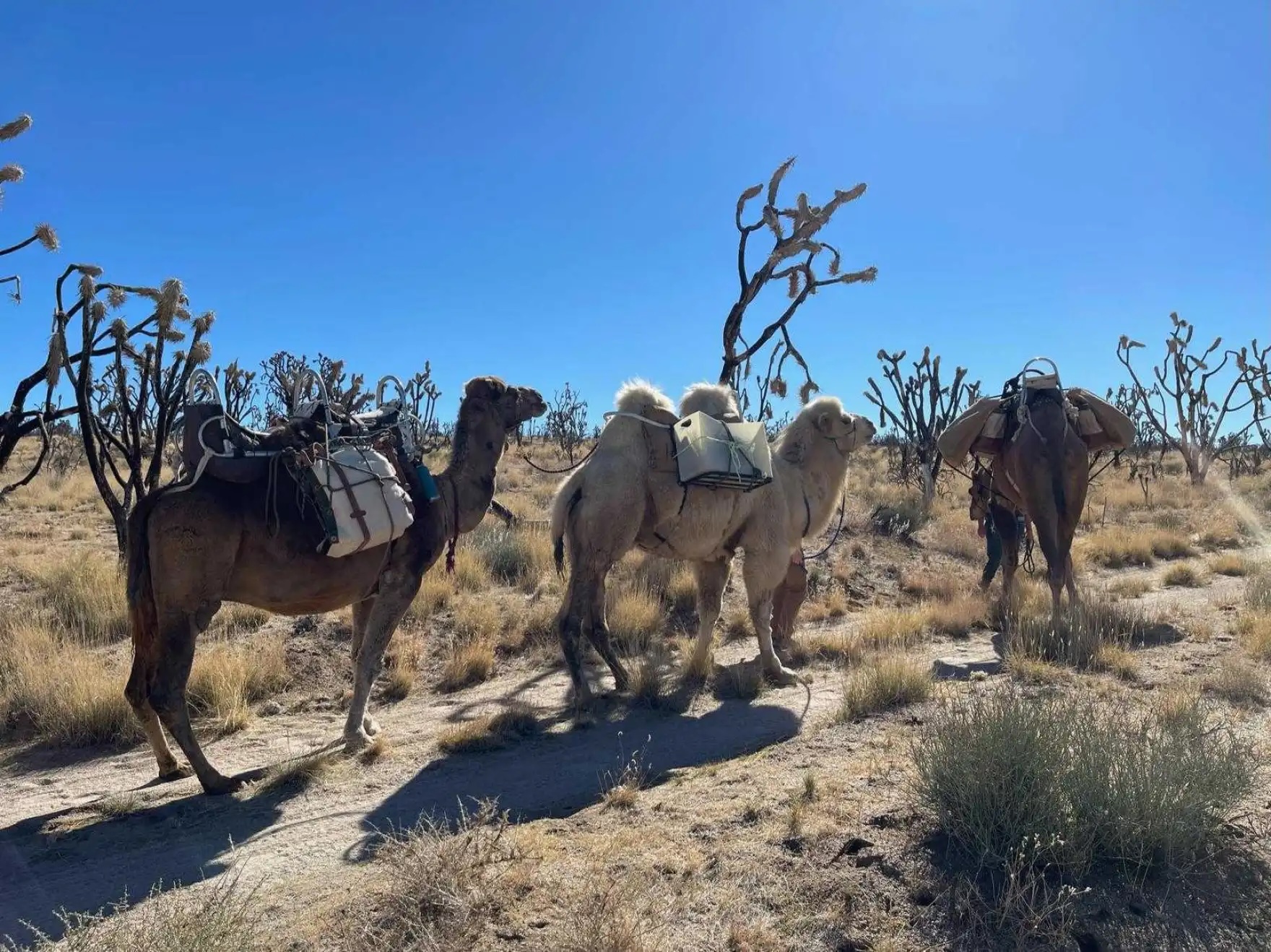
The Mojave Desert, with its vast, arid landscape, is home to the iconic Joshua tree. These unique trees have a fascinating history, once coexisting with Giant Ground Sloths during the ice age and now relying on rodents for their slow dispersal. However, a devastating wildfire in 2020 burned a significant portion of the desert, including many Joshua trees, posing a challenge for their restoration.
“Joshua trees seeds don’t spread very quickly,” explained Debra Hughson, deputy superintendent at the Mojave National Preserve. “They don’t move very fast or they don’t move very far with just small mammals around.” Despite these challenges, scientists were determined to help the Joshua trees recover, especially in areas like Cima Dome, where their survival could be crucial in the face of climate change.
To accelerate the recovery process, Hughson and her colleagues decided to plant Joshua tree seedlings in a more spaced-out pattern in the Dome’s burn scar. This approach aimed to distribute seed sources and promote the recovery of the entire area. However, the rugged terrain made it difficult for volunteers to reach the designated planting spots, requiring hours of hiking.
To address this challenge, the team came up with a unique solution — using camels to transport the seedlings and water into the wilderness. “Prehistoric camels were in the Mojave Desert, and the camels came through in 1857,” explained one of the volunteers, highlighting the historical connection between camels and the region. The camels, led by Herbie, Sully, and Chico, have been instrumental in carrying out these restoration efforts since 2021.
“Our goal is to protect natural systems and natural ecosystems — all the plants, all the animals, but then some animals and some plants wind up being just a little bit more ‘charismatic’ than other ones,” said Hughson, emphasizing the importance of charismatic species like the Joshua tree in garnering support for conservation efforts.
Through the dedication of volunteers and the help of these remarkable camels, the Mojave Desert’s Joshua trees are slowly making a comeback, offering hope for their future in this challenging environment.
Culture
Apes’ Playful Teasing Behavior Mirrors Human Playfulness
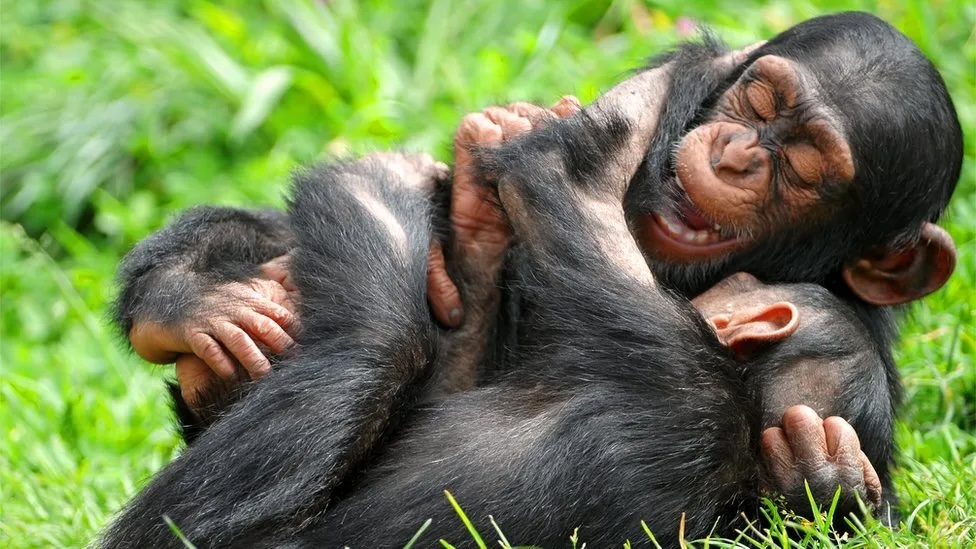
Did you know that apes like to tease and prank each other, just like humans do? Researchers have found that chimpanzees, bonobos, gorillas, and orangutans engage in playful teasing behavior, such as poking, tickling, body slamming, hair pulling, and waving objects in front of faces. This behavior is usually one-sided, with one ape trying to get a reaction from another.
In a study published in the journal Proceedings of the Royal Society B Biological Sciences, researchers analyzed 75 hours of video footage of apes at the San Diego Zoo in California and the Leipzig Zoo in Germany. The apes studied were between the ages of 3 and 5. The researchers observed 284 instances of teasing behavior, with 129 meeting the criteria for playful and provocative behavior. They identified 18 different teasing behaviors.
Professor Erica Cartmill of UCLA, who led the study, said that teasers often waved or swung body parts or objects in front of the other ape, hit or poked them, stared closely at their face, disrupted their movements, pulled their hair, or performed other behaviors that were hard to ignore.
The researchers believe that playful teasing and joking may have evolved in human ancestors around 13 million years ago. This behavior has implications for the study of emotion, humor, and pretense, and the researchers hope that their study will inspire further research into playful teasing in other species to better understand its evolution.
-

 OMG6 years ago
OMG6 years agoA Couple Gave Birth to the Most Beautiful Twins Ever
-

 OMG6 years ago
OMG6 years ago20 Rare Historical Photos
-

 OMG6 years ago
OMG6 years agoHilarious Airport Photos
-

 Cute6 years ago
Cute6 years agoMom Refuses to Let Daughter Eat Sugar and Years Later This is What She Grows Into
-

 OMG5 years ago
OMG5 years agoTop Secret Air Force One Facts That You Never Knew
-
OMG5 years ago
The Funniest Yearbook Photos Of All Time
-

 OMG6 years ago
OMG6 years agoRetired Mathematician Restores Log Cabin
-

 OMG4 years ago
OMG4 years agoWhat Happened When This ‘Duck Dynasty’ Legend Chopped Off His Beard?